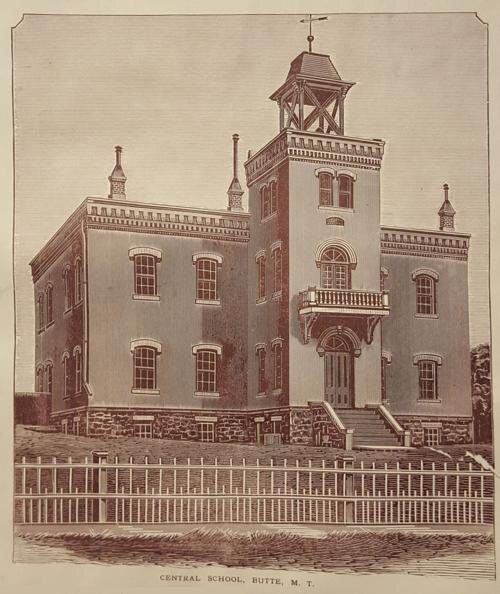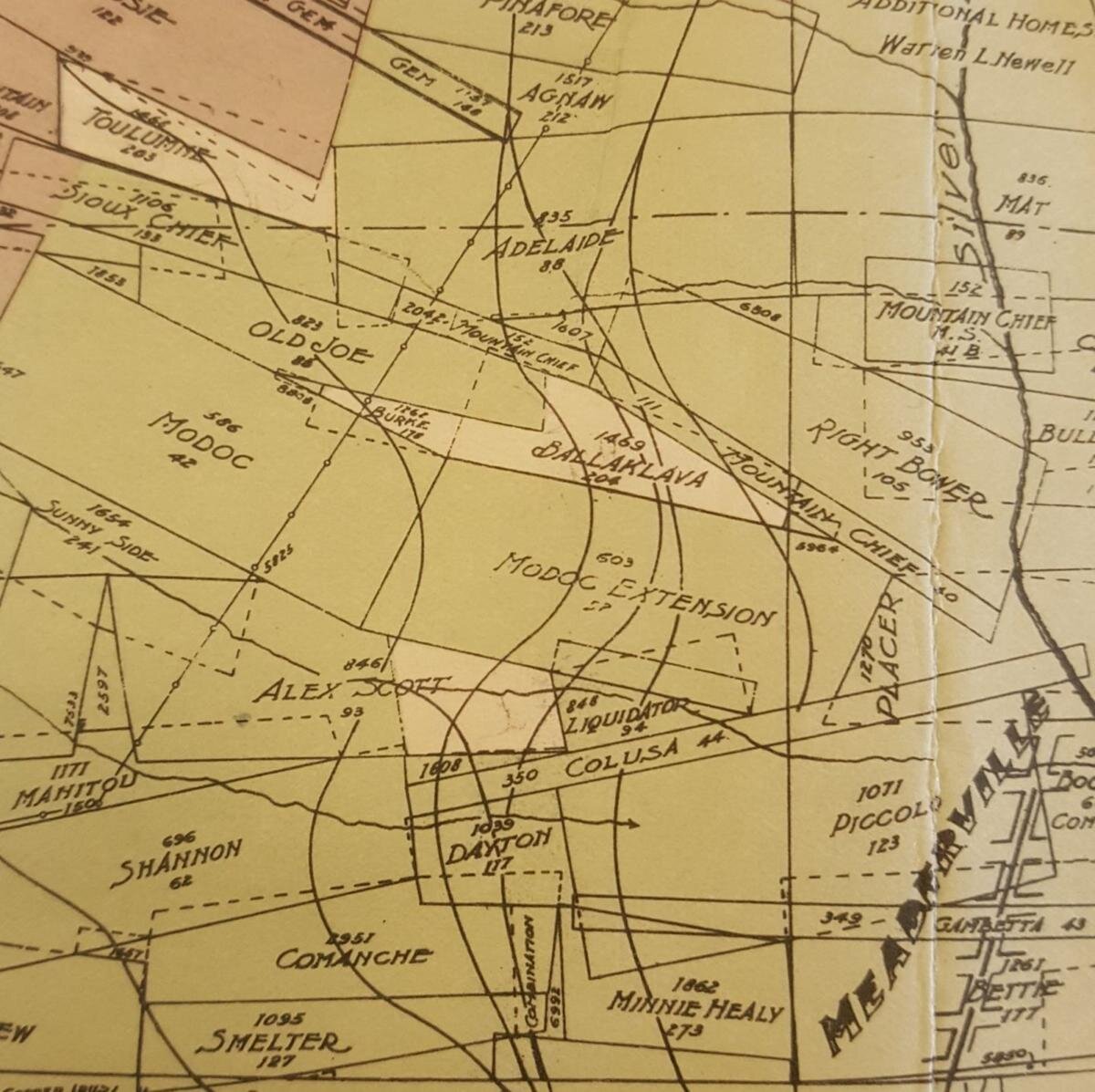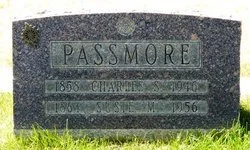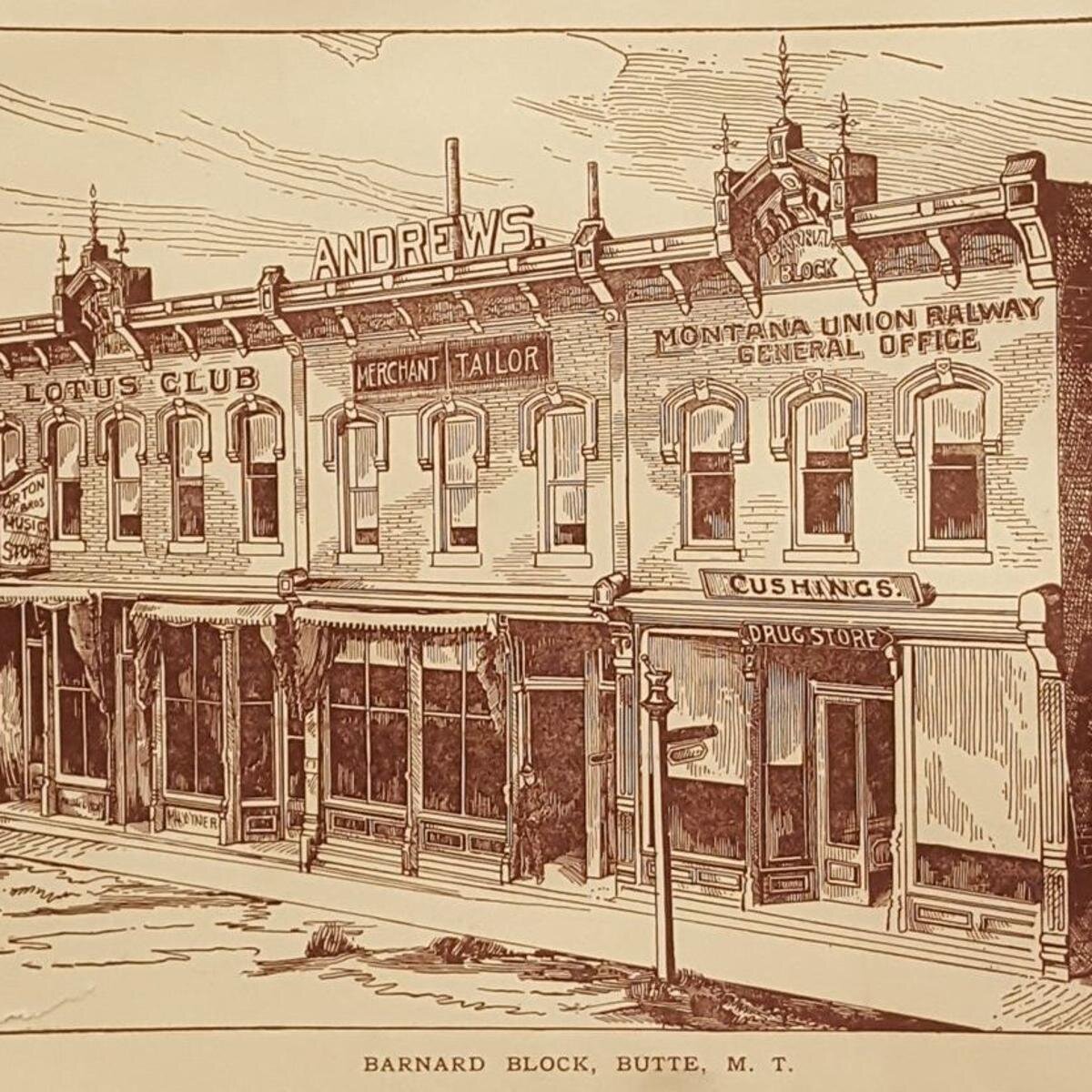
Butte, America’s Story Episode 100 - Donnell, Clark & Larabie
Donnell, Clark and Larabie’s bank, at the prominent southwest corner of Broadway and Main in Butte, was a branch of Robert Donnell’s Deer Lodge bank. The lot alone cost $1,400, a princely sum in April 1877 when the purchase was made.

Butte, America’s Story Episode 99 - The First Teacher
Born in London, England, Thomas C. Porter came to America when he was eight years old in 1843. He was among the early prospectors at Alder Gulch in 1864, but he left for Butte in October of that year.

Butte, America’s Story Episode 98 - The Year 1917
1917 represents the peak of many things for Butte: its population, its copper output, and probably its diversity. Here’s a look back at Butte in 1917. Events of local, national, and international significance marked the year, including both the Granite Mountain – Speculator Mine Disaster and the murder of Frank Little.

Butte, America’s Story Episode 97 - Paving Harrison
From the 1910s onward, Butte issued Special Improvement District (SID) bonds to finance various projects, just as most cities do. People would buy the bonds, to be repaid with interest over time.

Butte, America’s Story Episode 96 - First Elevator
“By means of the elevator one can take a short cut to the top of a sky scraper and come down again without putting forth a greater effort than tossing a “jolly” to the elevator boy, who designates the up and down trips as the “rise and fall of man.” “—That’s how the Anaconda Standard described it on December 21, 1902.

Butte, America’s Story Episode 95 - Beaver Block
The Marchesseau and Valiton Block on the northeast corner of Granite and Main was better known as the Beaver Block for the huge copper and concrete beaver gracing its parapet. It was built in 1890 as a typical three-story business block that initially housed the Silver Bow National Bank, a grocery, and a shoe store on the ground floor, with offices above.

Butte, America’s Story Episode 94 - Topography
Butte’s topography has certainly changed over the years, and we’re not just talking about the Berkeley and Continental Pits and the mine dumps. As the city grew, gulches and streams were eliminated or modified to accommodate the needs of housing and business.

Butte, America’s Story Episode 93 - Influenza in Stained Glass
The Ascension Window at St. Mark’s Lutheran Church recalls a devastating time in Butte. The window is in memory of Franz Arthur Benz, who died at age 23 in the great influenza pandemic of 1918-1919. His mother, Mrs. Arthur Benz, paid for the window in 1919.

Butte, America’s Story Episode 92 - John Noyes
John Noyes is not typically on the list of remarkable men of Butte, but he probably should be. Born in Canada in 1828 to parents from New England, he joined the California gold rush at age 23.

Butte, America’s Story Episode 91 - The Carroll Connection
The Burke and Balaklava claims were tiny little triangles on the northeastern flank of the Butte hill – no more than six acres or so, but prime real estate in terms of the subsurface, especially if one could use the apex law to advantage.

Butte, America’s Story Episode 90 - New Year’s of 1897
The society corner in Victorian Butte newspapers recorded all and sundry events, including New Year’s Eve parties. An item from the Butte Bystander for January 8, 1898, reports such a gathering at the home of Mr. and Mrs. Erastus Thomas, 213 East Quartz Street.

Butte, America’s Story Episode 89 - Mardi Gras
Promising patrons “more for a dime than they have ever seen before in Butte,” the show included death-defying acrobatic performances, including that of Miss Fravolia.

Butte, America’s Story Episode 88 - Richard Liljemark
Richard Liljemark “was one of the most popular and widely known youths of the south side” when he died May 29, 1917, at age 21 after two weeks of pneumonia.

Butte, America’s Story Episode 87 - Mastodon Hog
In February 1901, Butte and Anaconda were abuzz with the announcement of the arrival of a new engine for the Butte, Anaconda, and Pacific Railway. The “mastodon hog,” No. 19. was built by the Schenectady Company for the express purpose of hauling ore from Butte to the then new smelter being built in Anaconda.

Butte, America’s Story Episode 86 - The Election of 1894
The 1894 election in Montana was overshadowed by the state capital fight, won by Helena over Anaconda (by the narrow majority of 51.8%), but the vagaries of politics in Montana were well in evidence in other races as well.

Butte, America’s Story Episode 85 - Dr. Wah Jean Lamb
Wah Jean Lamb was born about 1870, and immigrated to the U.S. in 1885. After his graduation from USC, he came to Butte about 1902. He retired after 27 years here, and lived in San Diego at the time of the 1930 census; in 1940 he was living in Los Angeles, where he died in 1942.

Butte, America’s Story Episode 84 - Success Cafe
Butte’s boasts run the gamut, including firsts, biggest, most, and even smallest. The Midget Saloon at 104 North Main was full if it had eight patrons, and modestly boasted it was the smallest bar in the northwest. But Butte’s best-known claim to fame in the smallest category goes to the Success Café, just 3 feet 9 inches wide.

Butte, America’s Story Episode 83 - Passmores of Butte
Passmore Canyon south of Butte recalls a prominent business family from Butte’s early days. Charles Sumner Passmore came to Butte in 1889 not long after a major fire devastated the growing business district and led to the first city ordinance, mandating construction with brick and stone.

Butte, America’s Story Episode 82 - Stables
Stables were the garages of the 1800s, and prospering Butte had plenty. In 1884, in the area bounded by Jackson, Caledonia, Arizona, and Silver Streets at least 102 stables protected an unknown number of horses and other stock.

Butte, America’s Story Episode 81 - Barnard Block
The fire began in a building under construction across the street, and although the damage estimate exceeded $500,000 in dollars of the day, the Barnard Block did survive.